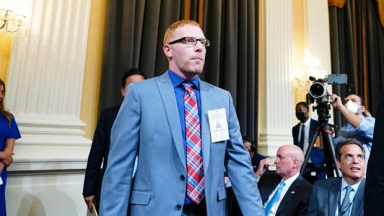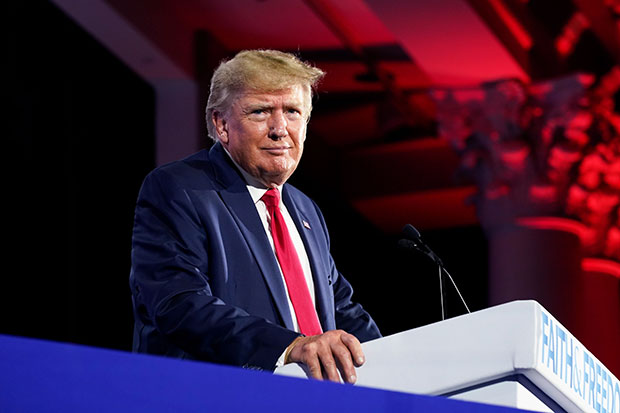
Stephen Ayres, one of the rioters who stormed the Capitol on January 6, said he might not have breached the building if former President Donald Trump had tweeted his message to stop earlier on the day of the attack. Ayres testified about why he chose to attend the rally, which led to the attack on the building, before the House Select Committee on Tuesday, July 12. When asked why he eventually left, he revealed that Trump’s video message telling people to stop, made him want to pack up and go home. Ayres suggested that if the then-president had done so earlier, the attack could’ve been avoided.
Stephen Ayres on what made him leave the Capitol on January 6th: "Basically when President Trump put his tweet out. We literally left right after that…to me, if he would have done that earlier in the day…maybe we wouldn't be in this bad of a situation." pic.twitter.com/OGe0FVJAE9
— CSPAN (@cspan) July 12, 2022
Ayres explained that he probably would’ve turned back sooner if Trump had instructed rioters to leave earlier. “When President Trump put his tweet out, we literally left right after that come out,” he said. “To me, if he would’ve done that earlier in the day [at] 1:30. We wouldn’t be in this. Maybe we wouldn’t have been in this as bad of a situation.”
Later in his testimony, Ayres said the video message from Trump felt like a turning point in the invasion. “As soon as [the video had] come out. Everybody started talking about it and it seemed like it started to disperse,” he said. “Once we got back to the hotel room, we’d seen that it was still going on but it definitely dispersed a lot of the crowd.”
Since the January 6 attack on the Capitol, Ayres said that he’d lost his job, and he’d sold his home, although many of the charges were dismissed. He said that it “changed my life, not for the good.” He admitted that he’s angered that Trump has continued to pedal the Big Lie, but he’s afraid of what it could hold for the future. “It makes me mad because I was hanging on every word he was saying,” he said. “You’ve got people still following and doing that. The next election could come out, and it could end up [going] down the same path that we are right now. We just don’t know.”
Earlier in his testimony, Ayres explained that he chose to go down to Washington DC, after seeing it on social media. He said that at the time he believed Trump’s lies about election fraud, but he admitted that he no longer believes it. He also said that if Trump hadn’t spread the lies about the election, it may have affected his decision to go to Washington. “Who knows? I may not have come down here,” he said. Ayres also explained that he originally hadn’t planned to go to the Capitol, and he said that he was moved to after hearing Trump’s speech.

Former Oath Keepers spokesman Jason Van Tatenhove testified in person. Van Tatenhove had left the organization before the Capitol riot and provided background information on the group.
The hearing came after a shocking testimony from Cassidy Hutchinson, a former aide to then-White House Chief of Staff Mark Meadows. Hutchinson revealed many details from the White House staff’s circle close to Trump throughout the rally and then-invasion of the Capitol on January 6. She revealed that Trump had ordered Secret Service to stop making his supporters go through metal detectors (therefore having weapons confiscated) before entering the ellipse for his speech. He also lunged for the steering wheel when his security detail would not take him to the Capitol with rioters. “The President said something to the effect of ‘I’m the F-ing president. Take me up to the Capitol now,” she said in her testimony.

Earlier sessions shed more light on details that were known prior to the sessions beginning, including that Trump put pressure on local politicians and officials from the Justice Department to try to overturn the results of the 2020 election. The hearings have also featured former members of Trump’s staff saying that they pushed back on his claims of election fraud, including former Attorney General William Barr, who said that he’d repeatedly told Trump that he thought that the claims of election fraud were “complete nonsense.”
The hearings have also shed light on the ways that Trump’s lies about voter fraud and a “stolen election” had an impact on many people, including a Georgia election worker and her mother, who revealed that they’d received a number of death threats since the election. A Capitol police officer also recalled the graphic scene fighting back insurrectionists who tried to invade the building on January 6, because of the lies about the election.


